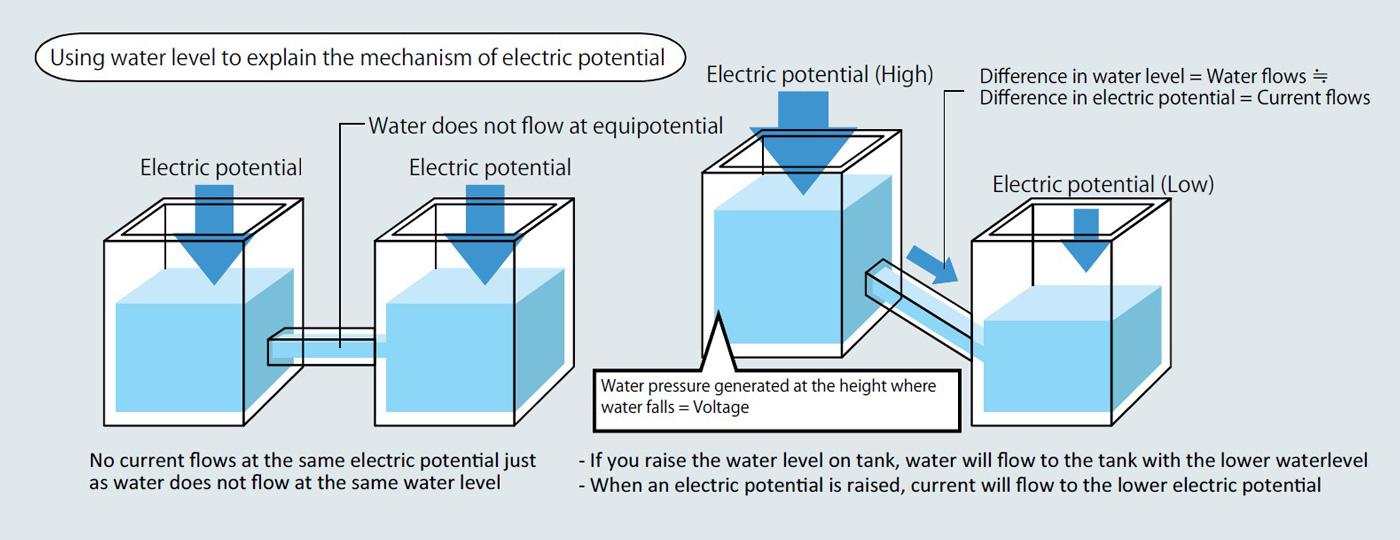According to the IEC / JIS standards, equipotential bonding is the means to prevent spark discharge, electric shock, and insulation breakdown of equipment by connecting all metal conductors in common and reducing the potential difference of each part. In practice the ground of an electrical equipment is connected with metal bodies such as building steel frames and piping. Power and communication lines cannot be connected directly to grounding electrodes or metal conductors, so they are connected using SPD. Equipotential bonding is applied in electrical rooms, power distribution boards, MDF rooms, etc.
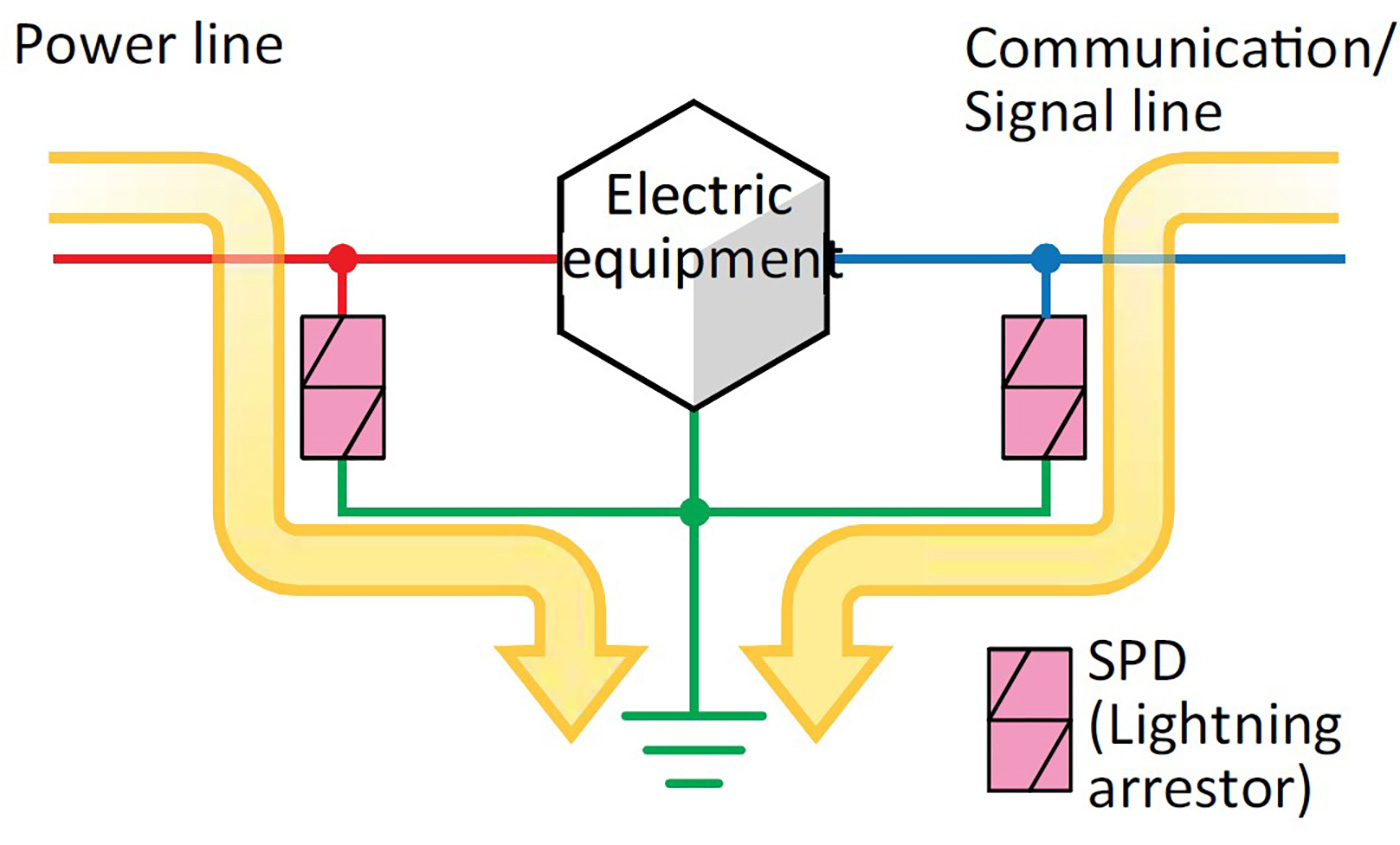
Grounding and bonding are key factors when applying equipotential bonding, which is essentially the core of lightning protection. In order to achieve equipotential bonding with the entire building through grounding, it is desirable to use a structure-based grounding or grounding electrode system (annular grounding electrode, mesh grounding electrode, foundation grounding electrode) and have the grounding of each electrical equipment integrated.
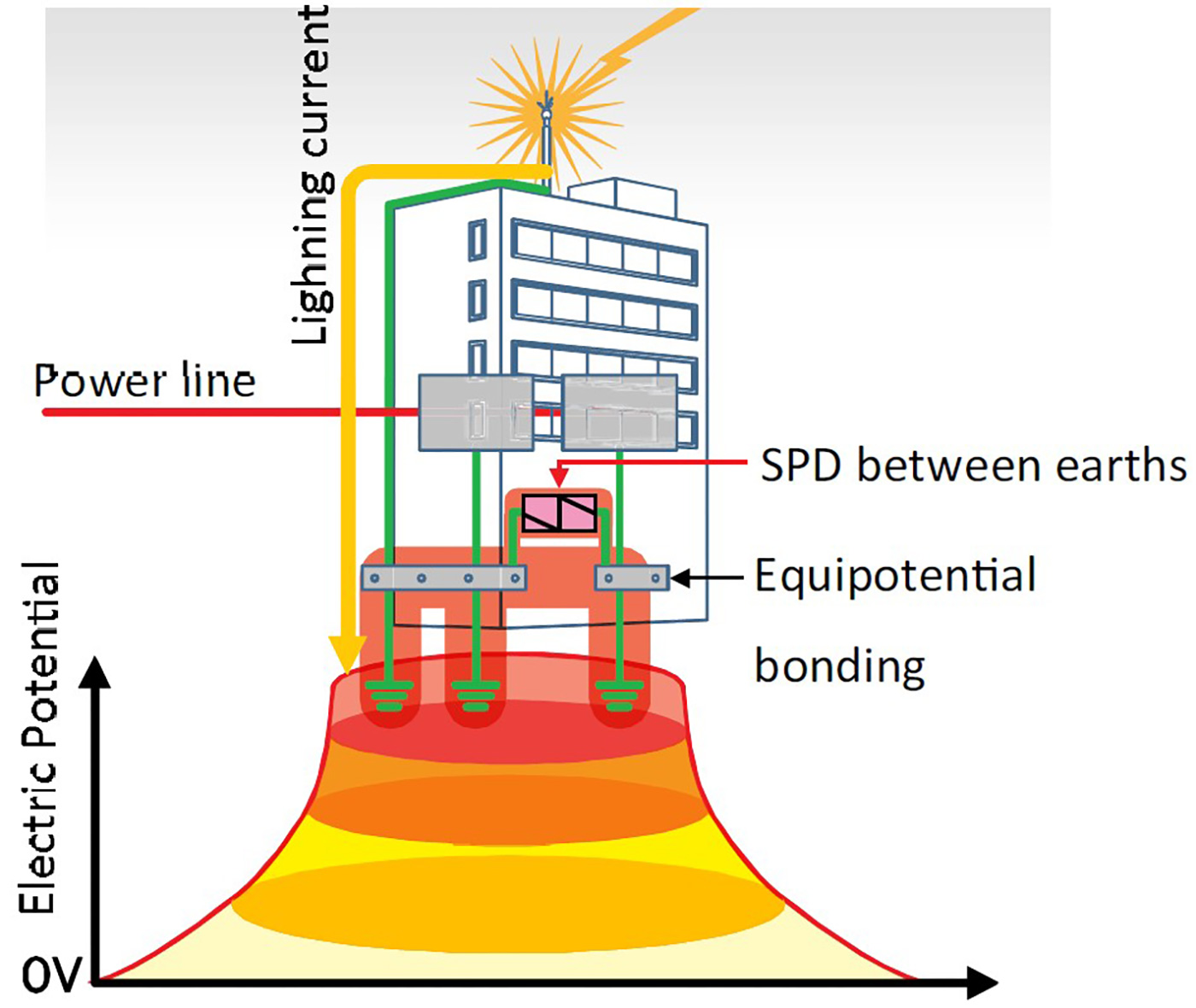
Since various conductors are drawn into the building. Even if equipotential bonding is achieved between the grounds, a lightning surges can invade from the power line, communication lines, and signal lines. Electrical equipment can be protected by installing the optimum SPD for each intrusion route and equipotentializing it.
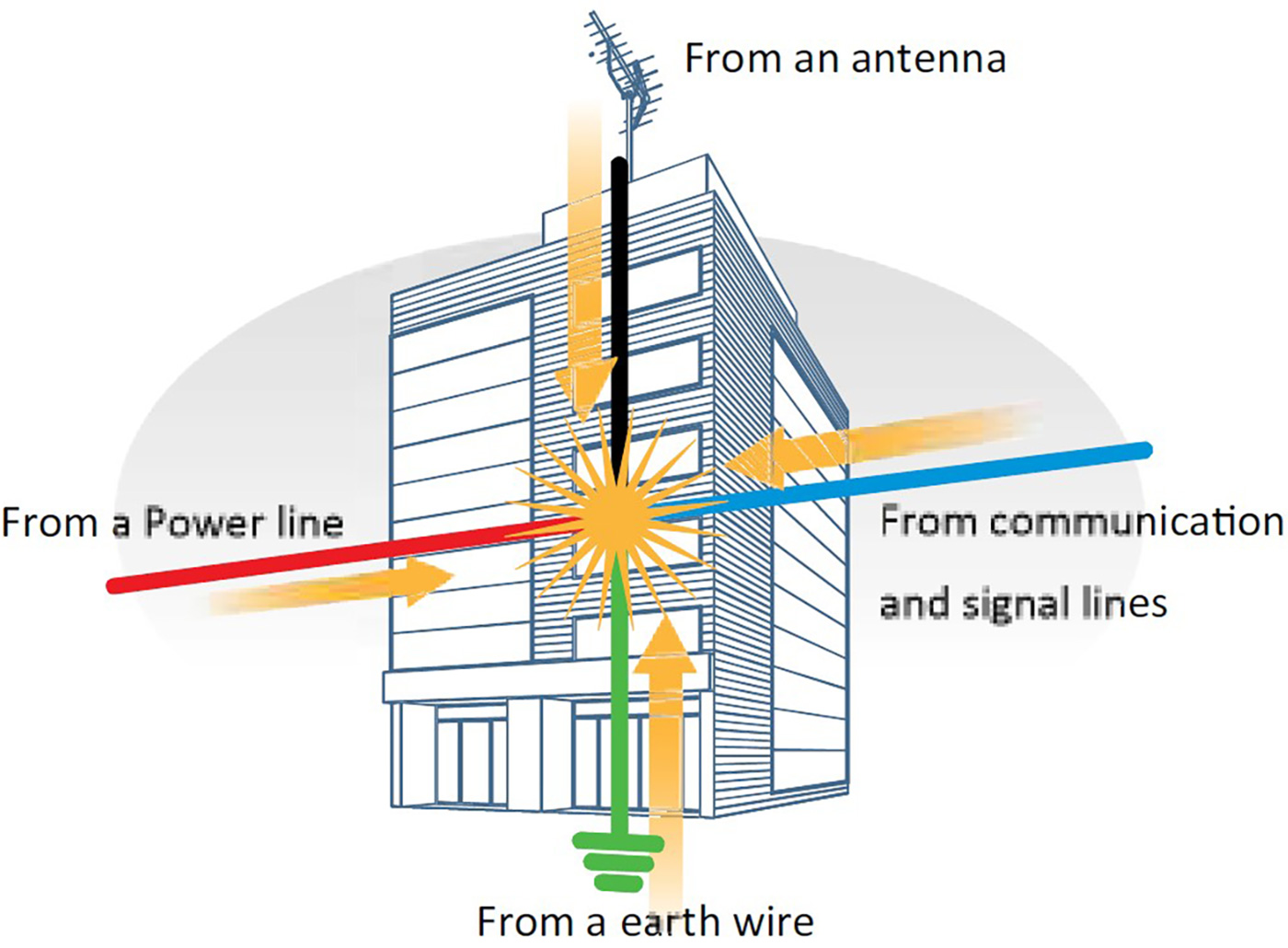
Even if lightning strikes outside the equipment site, it must be careful against lightning surge because of the potential difference between the building groundings. Especially, the equipment that is connected over wide area is influenced by lightning surge easily and it is necessary to take countermeasures more sufficiently.
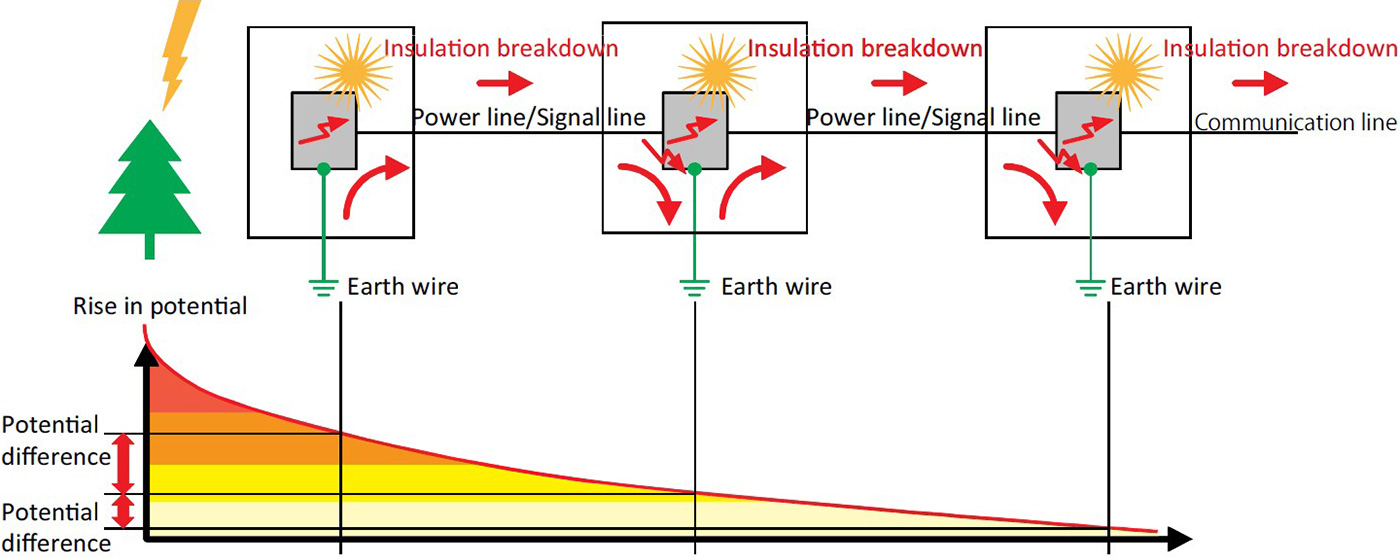
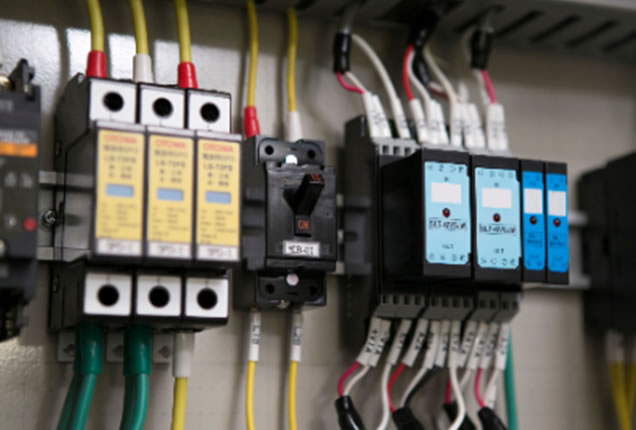
Lightning current flows from a point of high potential to low potential. Therefore equipment gets damage when an abnormally high current (lightning surge) passes through the equipment, from a higher to a lower potential point.
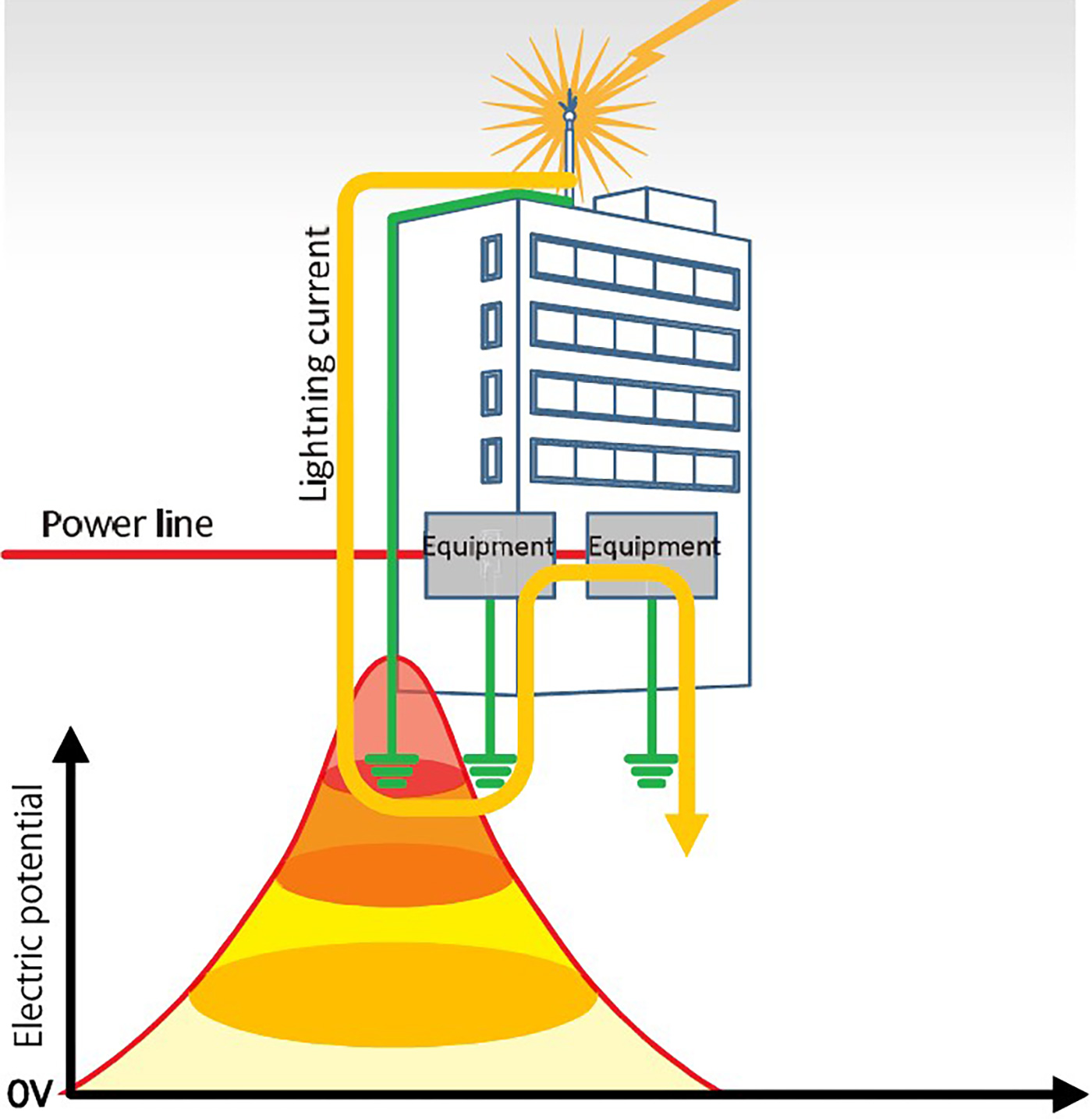
For example, if there are multiple groundings as shown in the above figure, a potential difference will occur between the groundings, and lightning surge will flow in and out via groundings.
By connecting metal conductors (grounding terminals, power lines, etc.) in a building to an equipotential point, the potential difference caused by lightning surges is minimized.
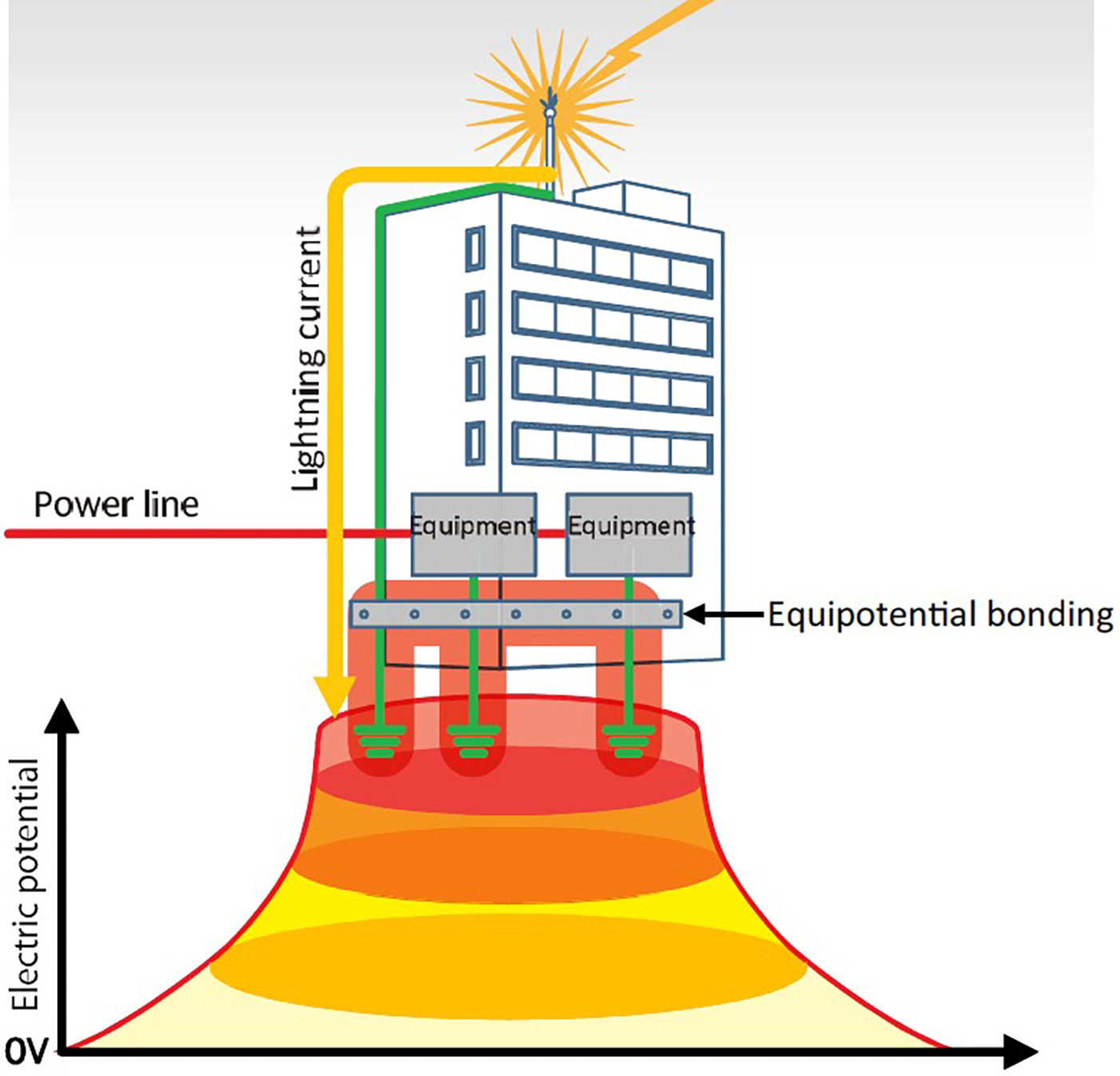
For example, in the above figure, the potential difference can be eliminated by connecting each grounding and making them equipotential.
When electricity is considered as physical image, potential energy of electricity (electric charge) means electric potential. Electric potential means the voltage at specific point from zero volt point (typically grounding).
The potential difference is the difference between the voltage at two points. For example, when electricity flows from point A to another point B, point A has a higher potential than point B.
